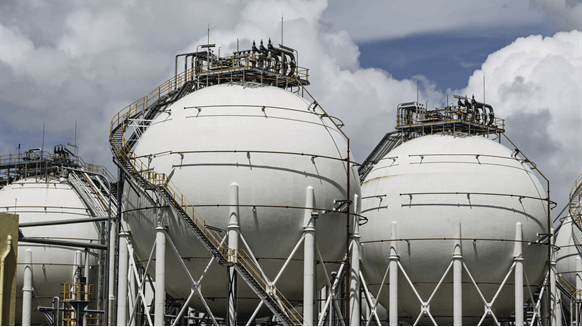North America will continue to dominate global LNG liquefaction capacity additions through 2027.
That’s what GlobalData stated in a statement recently sent to Rigzone, noting that the region will contribute about 59 percent of total capacity additions between this year and 2027.
In its statement, GlobalData noted that one of its recent LNG reports revealed that North America “is expected to witness the highest capacity additions globally, gaining a total capacity of 272.1 million of annual tons from new construction and expansion projects during the forecast period.”.
“The United States will primarily drive North American LNG liquefaction additions through 2027, accounting for nearly 80 percent of the region’s total capacity additions in 2027,” said GlobalData analyst Himani Pant Pandey in the statement
“Strong global demand for LNG and the availability of abundant shale gas are driving the growth of LNG terminals in North America,” Pandey added.
GlobalData identified Mexico as the second-largest contributor to North America’s LNG liquefaction capacity additions at the launch, noting that the country accounted for about 12 percent of total liquefaction capacity additions of LNG in North America during the forecast period.
“Canada follows Mexico, accounting for about eight percent of total capacity additions in the region in 2027,” Pandey noted in the statement.
In a separate statement sent to Rigzone in June, GlobalData stated that Asia will dominate global LNG regasification capacity additions through 2027.
The company noted in that statement that the region will contribute about 70 percent of total capacity additions between 2023 and 2027.
China will dominate LNG regasification additions in Asia, accounting for nearly 34 percent of total capacity additions in 2027, GlobalData noted in the statement. The company noted in the statement that India was the second largest contributor to Asia’s LNG regasification capacity additions, “accounting for around 22 percent of capacity additions in 2027.”
“India and China will primarily drive LNG regasification additions in Asia through 2027, accounting for nearly 56 percent of total capacity additions in 2027,” said GlobalData oil and gas analyst Bhargavi Gandham in this release.
“The growing demand for gas from both the domestic and industrial sectors and the energy transition goals will be the key drivers for increasing regasification capacity in these countries,” Gandham added.
“The Philippines ranks third in Asia, contributing about 10 percent of the region’s LNG regasification capacity additions over the forecast period,” Gandham continued.
In a statement published on Shell’s website in February this year, which accompanied the company’s latest LNG projection report, Shell noted that total global LNG trade reached 397 million tonnes in 2022 and that industry forecasts foresee LNG demand reaching between 650 and more than 700 million. tons per year in 2040.
“Further investment in liquefaction projects is needed to avoid a supply-demand gap expected to emerge in the late 2020s,” Shell said in the statement.
“Diverse new technologies to reduce emissions from gas and LNG supply chains will help cement their role in the energy transition,” Shell added.
In the statement, Steve Hill, executive vice president of energy marketing at Shell, noted: “The war in Ukraine has had far-reaching impacts on energy security around the world and has led to structural changes in the market that are likely to affect the industry of LNG in the long term”.
“It has also stressed the need for a more strategic approach, through long-term contracts, to ensure reliable supply to avoid exposure to price spikes,” he added.
In a statement accompanying the Energy Institute’s (EI) first annual and 72nd general edition of the World Energy Statistical Review, which was published in June, EI noted that LNG supply grow by five percent to 542 billion cubic meters in 2022. similar to 2021”.
“LNG supply increases came mainly from North America (10 Bcm) and APAC (8 Bcm). All other regions made a positive contribution to LNG supply growth in 2022 (eight Bcm),” he added EI in the statement.
“The increase in global LNG demand was led by Europe (62 Bcm) in 2022. Countries in the Asia Pacific region reduced their LNG imports by 24 Bcm and those in South and Central America by 11 Bcm,” EI continued.
To contact the author, please send an email andreas.exarcheas@rigzone.com


